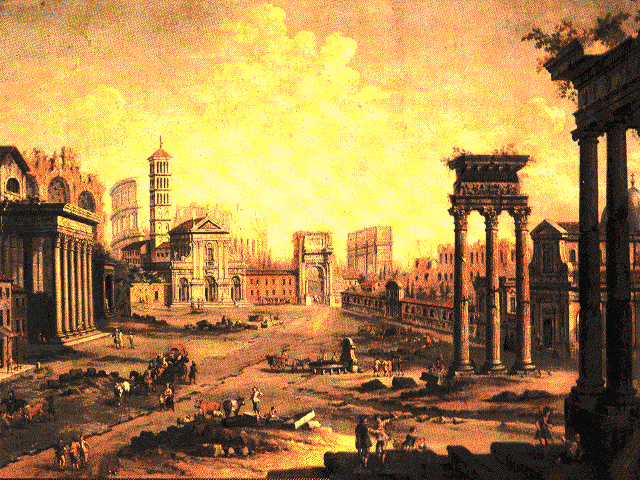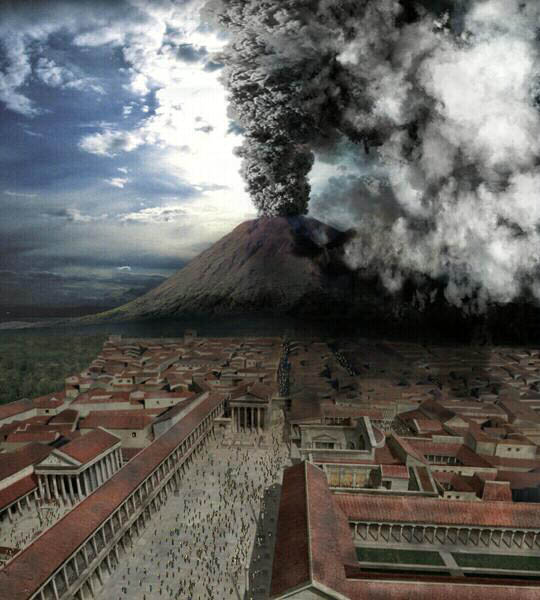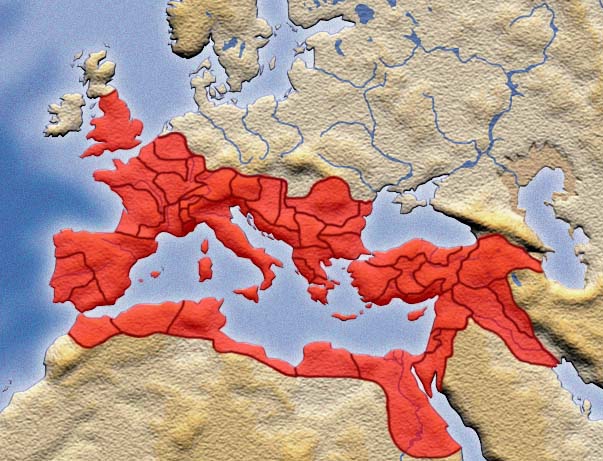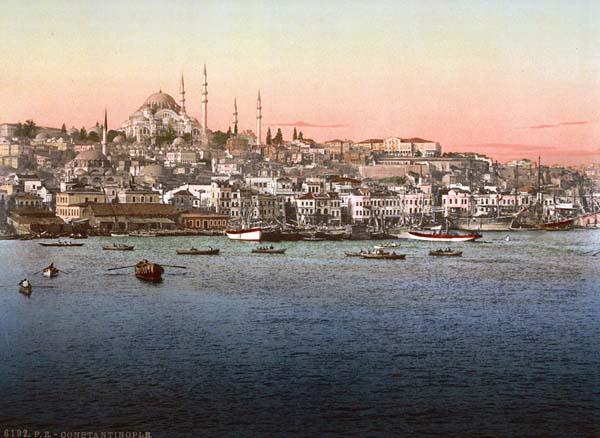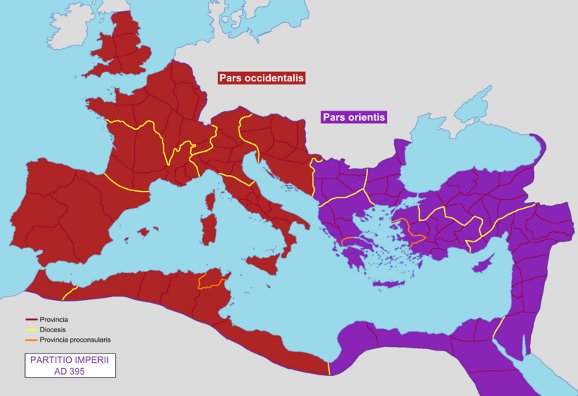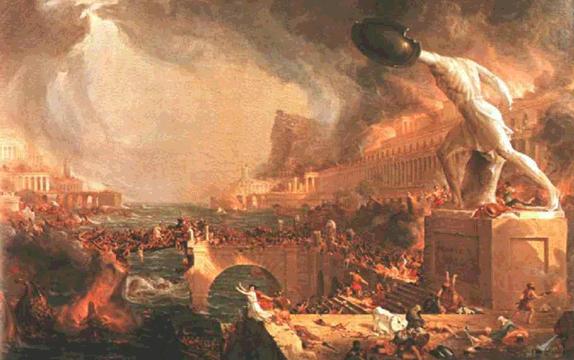0 - 500 C.E.
Imperial Period
0 C.E
I
I
I
64 C.E. -------------
I
I
I
I
I
I
I
I
79 C.E. --------------
I
I
I
I
I
I
I
80C.E.---------------
I
I
I
I
I
I
I
l
I
I
96-138 C.E.---------------
I
I
I
I
I
I
I
I
313 C.E. ----------------
I
l
I
I
I
I
I
330 C.E. -----------------
I
I
I
I
I
I
I
I
395 C.E. ----------------
I
I
I
l
I
I
I
I
476 C.E. ----------------
I
I
I
I
500 C.E.
End of the period
After the fall of the Western Empire, the Eastern Roman Empire survives, but in the mid-500s the Byzantine Empire takes over, thus terminating the Roman Empire.
I
I
I
64 C.E. -------------
I
I
I
I
I
I
I
I
79 C.E. --------------
I
I
I
I
I
I
I
80C.E.---------------
I
I
I
I
I
I
I
l
I
I
96-138 C.E.---------------
I
I
I
I
I
I
I
I
313 C.E. ----------------
I
l
I
I
I
I
I
330 C.E. -----------------
I
I
I
I
I
I
I
I
395 C.E. ----------------
I
I
I
l
I
I
I
I
476 C.E. ----------------
I
I
I
I
500 C.E.
End of the period
After the fall of the Western Empire, the Eastern Roman Empire survives, but in the mid-500s the Byzantine Empire takes over, thus terminating the Roman Empire.
The beginning of the period
After the assasination of Julius Caesar, his nephew, Octavian, takes the title of first emperor of Rome. He changes his name to Augustus Caesar and begins a strong empire.
After the assasination of Julius Caesar, his nephew, Octavian, takes the title of first emperor of Rome. He changes his name to Augustus Caesar and begins a strong empire.
Great fire in Rome
Current emperor Nero blames Christians for the fire and begins the Christian persecution.
Current emperor Nero blames Christians for the fire and begins the Christian persecution.
Vesuvius erupts
The great volcano Vesuvius erupts and buries Pompeii and Herculaneum.
The great volcano Vesuvius erupts and buries Pompeii and Herculaneum.
Coloseum completed
After initial construction by emperor Vespasian, Titus finishes the construction of one of the world's seven wonders, The Colosseum.
After initial construction by emperor Vespasian, Titus finishes the construction of one of the world's seven wonders, The Colosseum.
Empire at greatest extent
Under emperors Trajan and Hadrian, the borders of the Roman Empire stretch farther than ever before.
Under emperors Trajan and Hadrian, the borders of the Roman Empire stretch farther than ever before.
Christianity is accepted in Rome
After years of persecution, Christianity becomes the official religion of the Empire under Constantine.
After years of persecution, Christianity becomes the official religion of the Empire under Constantine.
Capital moves from Rome to Constantinople
Roman Emperor Constantine decides to move the Empire's capital from Rome to Constantinople, modern day Istanbul.
Roman Emperor Constantine decides to move the Empire's capital from Rome to Constantinople, modern day Istanbul.
Roman Empire splits into East and West
The Empire becomes too big to handle so it splits into two empires.
The Empire becomes too big to handle so it splits into two empires.
Fall of Western Empire
After invasion of the Goths, The Roman Empire becomes too weak and eventually falls.
.
After invasion of the Goths, The Roman Empire becomes too weak and eventually falls.
.
